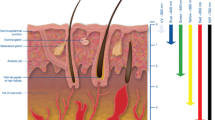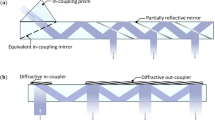Abstract
Illumination at a surface point is formulated as an integral of a BRDF using the incident radiance over the hemisphere domain. A popular method to compute the integral is Monte Carlo integration, in which the surface illumination is computed as the sum of the integrand evaluated with stochastically sampled rays. Although its simple nature is practically attractive, it incurs the serious drawback of noise artifacts due to estimator variance. In this paper, we propose a novel noiseless Monte Carlo rendering algorithm running in real time on a GPU. The main contribution is a novel importance sampling scheme, which constructs spatially continuous sample rays over a surface. For each evenly spaced polar angle of the eye ray, denoted by θ, incident rays are sampled with a PDF (probability density function) derived from a target BRDF lobe. We develop a force-based update method to create a sequence of consistent ray sets along θ’s. Finally, corresponding rays in the sequence of ray sets are linearly connected to form a continuous ray curve, referred to as a sample thread. When rendering, illumination at a surface point is computed with rays, each of which is given as a point on a sample thread. Because a thread provides a sample ray that continuously varies on a surface, the random variance of the illumination, causing visual noise during the Monte Carlo rendering process, is eliminated. A thread set is precomputed for each BRDF to free the GPU from the burden of sampling during real-time rendering. According to extensive experiments, approximately 100 threads are sufficient for most measured BRDFs with acceptable rendering quality for interactive applications.
Similar content being viewed by others
References
Agarwal, S., Ramamoorthi, R., Belongie, S., Jensen, H.W.: Structured importance sampling of environment maps. ACM Trans. Graph. 22(3), 605–612 (2003)
Burke, D., Ghosh, A., Heidrich, W.: Bidirectional importance sampling for direct illumination. In: Proceedings of Eurographics Symposium on Rendering ’05, pp. 243–252 (2005)
Clarberg, P., Jarosz, W., Akenine-Möller, T., Jensen, H.W.: Wavelet importance sampling: efficiently evaluating products of complex functions. ACM Trans. Graph. 24(3), 1166–1175 (2005)
Colbert, M., Kr̆ivánek, J.: GPU Gems 3. In: GPU-Based Importance Sampling. Addison-Wesley, Reading (2008). Chap. 20
Dutré, P., Lafortune, E.P., Willems, Y.D.: Monte Carlo light tracing with direct computation of pixel intensities. In: Proceedings of Compugraphics ’93, pp. 128–137 (1993)
Jensen, H.W.: Monte Carlo ray tracing. In: SIGGRAPH ’03 Course 44 (2003)
Kajiya, J.T.: The rendering equation. In: Proceedings of SIGGRAPHI ’86 (1986)
Kontkanen, J., Räsänen, J., Keller, A.: Irradiance filtering for Monte Carlo ray tracing. In: Monte Carlo and Quasi-Monte Carlo Methods 2004, pp. 259–272. Springer, Berlin (2004)
Kurt, M., Edwards, D.: A survey of brdf models for computer graphics. SIGGRAPH Comput. Graph. Q. 43(2), 1–7 (2009)
Lafortune, E.P., Willems, Y.D.: Bi-directional path-tracing. In: Proceedings of Compugraphics ’93, pp. 145–153 (1993)
Lawrence, J., Rusinkiewicz, S., Ramamoorthi, R.: Efficient brdf importance sampling using a factored representation. ACM Trans. Graph. 23(3), 496–505 (2004)
Lee, M., Redner, R.: A note on the use of nonlinear filtering in computer graphics. IEEE Comput. Graph. Appl. 10(3), 23–29 (1990)
Matusik, W., Pfister, H., Brand, M., McMillan, L.: A data-driven reflectance model. ACM Trans. Graph. 22(3), 759–769 (2003)
McCool, M.: Anisotropic diffusion for Monte Carlo noise reduction. ACM Trans. Graph. 18(2), 171–194 (1999)
Pharr, M., Humphreys, G.: Physically Based Rendering: from Theory to Implementation. Morgan Kaufmann, San Mateo (2004)
Sun, X., Zhou, K., Chen, Y., Lin, S., Shi, J., Guo, B.: Interactive relighting with dynamic brdfs. ACM Trans. Graph. 26(3), 27 (2007)
Veach, E., Guibas, L.J.: Optimally combining sampling techniques for Monte Carlo rendering. In: Proceedings of SIGGRAPH ’95, pp. 419–428 (1995)
Veach, E., Guibas, L.J.: Metropolis light transport. In: Proceedings of SIGGRAPH ’97, pp. 65–76 (1997)
Weinzierl, S.: Introduction to Monte Carlo methods. In: Topical Lectures Given at the Research School Subatomic Physics (2000)
Author information
Authors and Affiliations
Corresponding author
Rights and permissions
About this article
Cite this article
Kim, S., Kyung, MH. & Lee, JH. Noiseless GPU rendering of isotropic BRDF surfaces. Vis Comput 28, 125–135 (2012). https://doi.org/10.1007/s00371-011-0633-4
Published:
Issue Date:
DOI: https://doi.org/10.1007/s00371-011-0633-4




